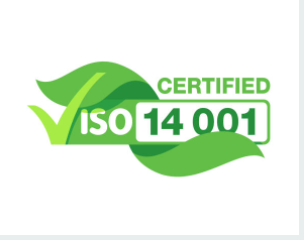Understanding ISO 14001: A Comprehensive Guide to Environmental Management Systems
ISO 14001 is an internationally recognized standard that sets the framework for implementing and managing an effective Environmental Management System (EMS). This comprehensive guide aims to provide a deeper understanding of ISO 14001 and its significance in driving environmental sustainability within organizations.
ISO 14001 focuses on helping organizations establish a systematic approach to identify, manage, and reduce their environmental impacts. By implementing the standard, businesses can enhance their environmental performance, comply with relevant regulations, and demonstrate their commitment to sustainability.
This guide explores the key elements of ISO 14001, including the environmental policy, planning, implementation, operation, performance evaluation, and continual improvement. It highlights the importance of leadership commitment, stakeholder engagement, and effective communication in achieving environmental objectives.
By adopting ISO 14001, organizations can effectively manage their energy consumption, waste generation, water usage, and emissions. The standard encourages a proactive approach to prevent pollution, conserve resources, and promote sustainable practices throughout the entire value chain.
The Benefits of ISO 14001 Certification: Driving Sustainability and Competitive Advantage
ISO 14001 certification brings numerous benefits to organizations that prioritize sustainability and environmental responsibility. This section explores the advantages of achieving ISO 14001 certification and how it can drive both environmental performance and competitive advantage.
Firstly, ISO 14001 certification enhances an organization’s reputation and credibility. It demonstrates a commitment to environmental stewardship, which is increasingly important to customers, stakeholders, and the general public. Certification can differentiate a business from competitors and open doors to new opportunities, partnerships, and markets.
Secondly, ISO 14001 certification leads to improved operational efficiency. By implementing systematic environmental management practices, organizations can identify inefficiencies, reduce waste, optimize resource usage, and lower operating costs. This not only benefits the environment but also enhances the organization’s financial performance.
Thirdly, ISO 14001 certification ensures compliance with environmental regulations and requirements. Organizations that adhere to the standard’s guidelines are better equipped to understand and fulfill their legal obligations, avoiding potential fines, penalties, and reputational damage.
Moreover, ISO 14001 certification promotes a culture of continual improvement. It encourages organizations to set environmental objectives, measure their performance, and take corrective actions when necessary. This proactive approach fosters innovation, encourages employee engagement, and drives ongoing sustainability initiatives.
Lastly, ISO 14001 certification strengthens relationships with stakeholders. It demonstrates a commitment to transparency, accountability, and responsible corporate citizenship. This can lead to increased trust from customers, investors, employees, and the local community.
In conclusion, ISO 14001 certification offers a wide range of benefits, including enhanced reputation, improved operational efficiency, regulatory compliance, continual improvement, and stakeholder engagement. By achieving certification, organizations can drive sustainability, gain a competitive advantage, and contribute to a greener future.
Implementing ISO 14001: Step-by-Step Guide for a Successful Environmental Management System

Implementing ISO 14001 can seem like a daunting task, but with proper guidance, organizations can successfully establish an effective Environmental Management System (EMS). This step-by-step guide provides a roadmap for implementing ISO 14001 and creating a robust environmental framework.
Leadership Commitment:
Obtaining top-level management commitment is crucial for successful implementation. Leaders must champion environmental sustainability, allocate necessary resources, and promote a culture of environmental responsibility throughout the organization.
Conducting a Gap Analysis:
Start by assessing the organization’s existing environmental practices and identifying gaps between current practices and the ISO 14001 requirements. This gap analysis will help determine the scope and focus of the implementation process.
Developing the Environmental Policy:
Create a clear and concise environmental policy that aligns with the organization’s values, goals, and legal obligations.
Establishing Objectives and Targets:
Set measurable environmental objectives and targets that align with the organization’s environmental policy. These objectives should be realistic, achievable, and address key areas of impact, such as energy consumption, waste reduction, and pollution prevention.
Implementation and Documentation:
Develop and implement the necessary procedures, processes, and controls to meet the requirements of ISO 14001. Document these procedures in an Environmental Management System manual, which serves as a guide for employees and stakeholders.
Employee Training and Awareness:
Provide training to employees at all levels to ensure they understand their roles and responsibilities in implementing the Environmental Management System. Raise awareness about environmental issues, the importance of compliance, and the organization’s sustainability goals.
By following these steps and dedicating resources and commitment, organizations can successfully implement ISO 14001 and establish an effective Environmental Management System. This system will not only help meet regulatory requirements but also drive environmental performance, improve operational efficiency, and enhance the organization’s sustainability credentials.
Beyond Compliance: Leveraging ISO 14001 for Sustainable Business Practices
ISO 14001, an internationally recognized standard for Environmental Management Systems (EMS), goes beyond mere compliance with environmental regulations. It offers organizations a framework to integrate sustainable practices into their operations, driving long-term environmental stewardship and responsible business conduct. This section explores how organizations can leverage ISO 14001 to go beyond compliance and embrace sustainable business practices.
Environmental Impact Assessment:
ISO 14001 encourages organizations to conduct a comprehensive assessment of their environmental impacts. This assessment goes beyond legal requirements and considers the entire lifecycle of products, services, and processes. By understanding the environmental hotspots, organizations can identify opportunities for improvement and make informed decisions to minimize their ecological footprint.
Resource Efficiency and Conservation:
ISO 14001 promotes the efficient use of resources such as energy, water, and raw materials. Organizations can leverage the standard to implement strategies for resource conservation, waste reduction, and energy efficiency. This not only reduces environmental impact but also results in cost savings and improved operational efficiency.
Supply Chain Sustainability:
ISO 14001 encourages organizations to engage their suppliers and promote sustainability throughout the supply chain. By integrating environmental criteria into supplier selection, organizations can ensure that their partners adhere to responsible practices. Collaborative efforts towards sustainability can lead to a more resilient and environmentally conscious supply chain.
Stakeholder Engagement:
ISO 14001 emphasizes the importance of engaging stakeholders, including employees, customers, communities, and regulatory bodies. By actively involving stakeholders in environmental decision-making processes, organizations can foster a sense of shared responsibility and gain valuable insights for sustainable practices. This engagement builds trust, enhances reputation, and creates a positive impact beyond organizational boundaries.
Innovation and Product Development:
ISO 14001 encourages organizations to integrate environmental considerations into product development and innovation processes. By applying eco-design principles, organizations can develop products and services that have a reduced environmental impact throughout their lifecycle. This proactive approach enables businesses to meet customer demands for sustainable solutions and gain a competitive edge in the market.
Continuous Improvement:
ISO 14001 promotes a culture of continual improvement in environmental performance. Organizations can use the standard to establish mechanisms for monitoring, measuring, and evaluating their progress towards environmental objectives. By regularly reviewing performance, identifying areas for improvement, and implementing corrective actions, organizations can continuously enhance their sustainability practices.
By leveraging ISO 14001 for sustainable business practices, organizations can move beyond compliance and integrate environmental considerations into their core operations. This approach not only contributes to global sustainability goals but also brings tangible benefits such as cost savings, enhanced reputation, and increased customer loyalty. ISO 14001 certification becomes a catalyst for organizations to embrace sustainability as a fundamental part of their business strategy, fostering a more environmentally conscious and responsible future.


























